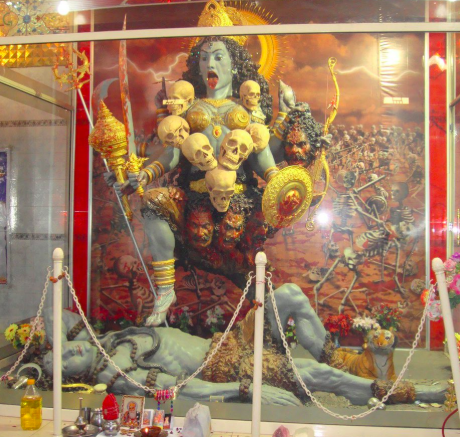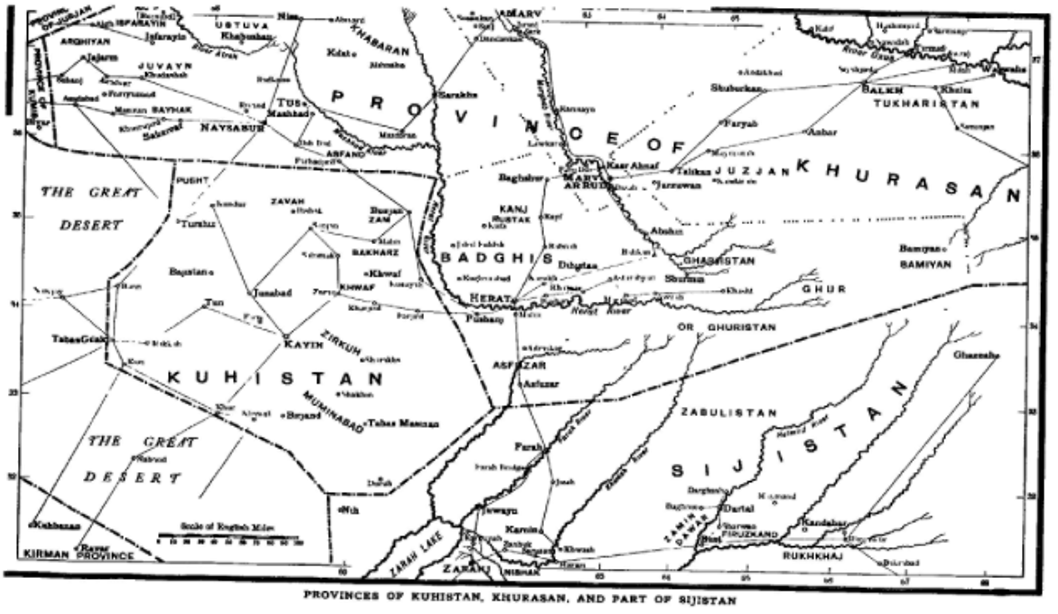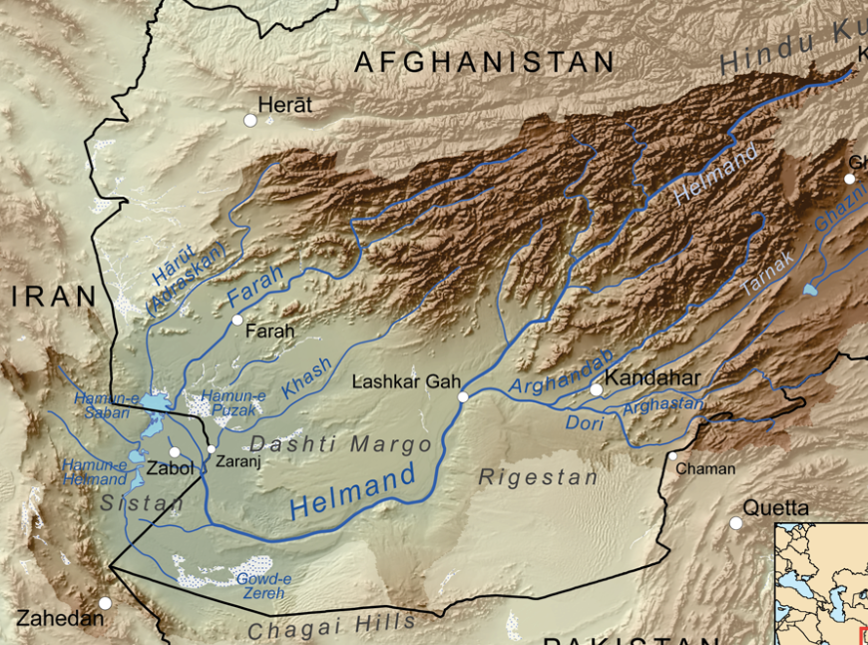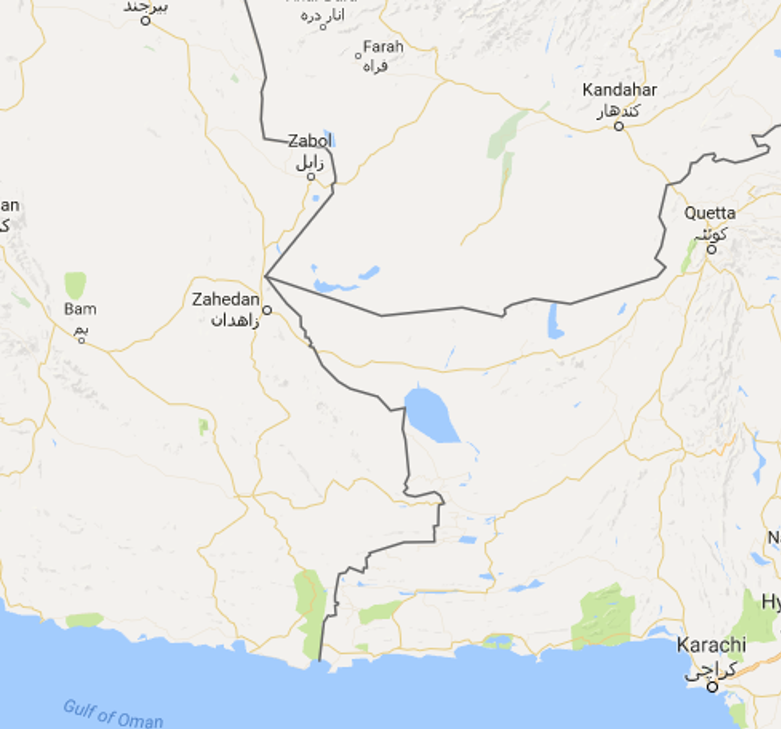Starting a long thread, on the journey of the arabs to the frontiers of Bharat in 712 CE. Have been studying it for some time.
The main source is "The Origins of the Islamic State", translation of Futuh al-Buldan by the 9th century Persian historian Ahmad Ibn Yahya al-Baladhuri
The main source is "The Origins of the Islamic State", translation of Futuh al-Buldan by the 9th century Persian historian Ahmad Ibn Yahya al-Baladhuri
1. During the reign of Umar ibn Al-Khattāb the second Caliph (who had succeeded Abu Bakr), between 634 - 644 CE, Uthman Thakafi was appointed the sixth governor of Oman and Bahrain.
2. Uthman Thakafi sent an expedition by sea to Thane in the year 637 C.E., during the reign of Pulakeshin-II. The expedition returned empty handed. Probably the Arabs got a sound trashing by one of the vassals of Pulakeshin.
3. Uthman Thakafi also sent his second brother Al-Hakam on an expedition to Barwas (the modern day Bharauch), where there was some success.
4. Uthman Thakafi then sent his brother al-Mughirah ibn-abu-lAsi to the Gulf of Daibul (the region near present day Karachi). One version says that al-Mughirah was killed in this expedition, by the governor of the Chach province of Sindh
5. Daibul, at the mouth of the Indus, was the Indian port know best to the Arabs, beyond the eastern end of the Persian Gulf. The Indus was known as Nahr Mihran to the Arabs. The word “Daibul” is said to be a corruption of the ancient word “Dewal”.
6. “Dewal” is again said to be a corrupted form of “Devalaya” which refers to a famous Buddhist stupa during the ancient times. Daibul is described as a place devoid of any vegetation and inhabited only on account of trade. The ruins of Daibul are located 40 miles east of Karachi
7. All the three expeditions – to Thane, to Bharauch, and to Daibul were sent without the Caliph Umar’s consent. When Caliph Umar was informed about these expeditions, he rebuked Uthman Thakafi, saying “thou hast put a worm upon the wood”.
8. But Caliph Umar also added that had the Arabs lost any men, the Caliph would have killed an equal number of men from Utham Thakafi& #39;s tribe in retaliation. After this, the idea of attacking Sindh was put to rest for some time.
9. So these were the first wave of incursions into the sub-continent.
In 644 C.E., Caliph Umar dispatched an expedition to Makran under the leadership of Hakem bin Amr al-Taghlibi. Makran is the land to the west of the Balochistan, and mostly a barren desert.
In 644 C.E., Caliph Umar dispatched an expedition to Makran under the leadership of Hakem bin Amr al-Taghlibi. Makran is the land to the west of the Balochistan, and mostly a barren desert.
10. Hakem bin Amr al-Taghlibi was joined by a volunteer Suhair ibn Adi, who led the forces at Makran. The Hindu potentate of the Kingdom of Sindh concentrated his army in Makran to halt the advance of the arabs.
11. The Battle of Rasil was fought between the Rashidun Caliphate and Raja Rasil in early 644 CE It was first encounter of a Caliphate and a Hindu Kingdom of Sindh. The battle may have been fought at the western bank of River Purali or Hub. The Rashidun forces emerged victorious.
12. The victorious arab army returned to Persia along with booty and a war elephant. Suhar Abdi, a messenger, carried the news of victory to Umar. When the Caliph enquired about the country, Suhar Abdi replied ...
13. “It& #39;s a land where the plains are stony; where water is scanty; where the fruits are unsavoury; where men are known for treachery; where plenty is unknown;; A large army is less for there; And a less army is useless there; The land beyond it, is even worse”
14. Caliph Umar, after learning that Baluchistan was a barren land and unfavourable for sending an army, instructed Hakim that for the time being Makran should be the easternmost frontier of the Caliphate, and that no further attempt should be made to extend the conquests.
15. This brings to an end of the second phase of the arab incursions eastwards towards the land of the Sindhu river.
16. After Uthman ibn Affan became the third Caliph in 644 CE. He appointed his cousin Abdallah ibn-Amir as the governor of Basra region, now Iraq. In 649 CE, Caliph Uthman ordered Abdallah to send a force to the frontiers of Al-Hind (the Sindh region), to bring back intelligence.
17. Sindh was the Persian form of the name Hind, but the arabs used it vaguely to denote the area to the east of Makran, which is now partly in Baluchistan and partly in modern Sindh province of Pak.
18. Abdallah dispatched Hakim ibn-Jabalah for gathering intelligence. Hakim listed among the prominent followers of Mohammed, was an obedient servant of the fourth Caliph Imam Ali. Jabalah was killed later in the battle of al-Jamal in 652 CE, one of the many internecine disputes.
19. Hakim ibn-Jabalah later reported to Caliph Uthman, “The water supply is scanty, the dates are inferior, the robbers are bold. A small army would be lost there, and a large army would starve”. Caliph Uthman therefore too, like his predecessor did not order any raid to the land
20. This was the third foray by the arabs to enter Sindh. Again unsuccesful.
21. During the reign of the fourth Caliph Ali ibn-Ali-Talib (also known as Imam Ali), in the year 659 C.E, an officer in his army, al-Harith ibn-Murrah, took permission from the Caliph to lead a raid to the frontier of Sindh.
22. Harith was victorious, gained booty and captives, and distributed as many as 1000 captives a day. But he was later killed along with his followers in 664 C.E., at a place called al-Kikan (present day Kalat) in Balochistan, at the border of Sindh region.
23. A digression here, to describe the geography and the people of Kalat.
Kikan was a state in the hilly region around Bolan Pass and is referred to in his travel accounts by the Chinese traveller Hieun Tsang.
Kikan was a state in the hilly region around Bolan Pass and is referred to in his travel accounts by the Chinese traveller Hieun Tsang.
24. There were four routes to enter India from West viz., (i) by sea, (ii) Khybar Pass, (iii) Bolan Pass, and (iv) Makran Coast. The Khybar Pass was guarded by Kabul and Zahull while the Bolan Pass was protected by the & #39;Jats& #39; of Kikan or Kikanan.
25. The town of Kalat is said to have been founded by and named Qalat-e Sewa (Sewa& #39;s Fort), after Sewa, a legendary hero of the Brahui people. Incidentally, the Brahui language is said to be a cousin of Tamil, and there are several theories trying to explain it.
26. There is a mandir dedicated to the Kali; which dates to the pre-Islamic era. Balochistan formed the borderland between ancient India and Persia, and the Kalat region was called “Drangani” in Sanskrit, meaning “the frontier”.
27. The people of Balochistan and Kalat are mentioned in the Brahmanda Purana, in the following verses. The word “Kalatoyaka” means the people of Kalat.
28. This marks the fourth campaign of the arab desire to raid Hindustan.
29. After Mu’awiyah became the fifth Caliph, in 664 CE, al-Muhallab ibn Abu Sufra led a renewed campaign into Sistan, reaching as far as the frontiers of Sindh.
30. al-Muhallab was an Arab general, and served the Caliphs for almost 60 years, and his descendants, known as the Muhallabids, held high office under various Umayyad and Abbasid caliphs.
31. Sistan, known in ancient times as Sakastan ("the land of the Saka"), is a historical and geographical region in present-day eastern Iran (Sistan and Baluchistan) and southern Afghanistan (Nimruz, Helmand, Kandahar)
32. The Arabs called the area eastward of the Zarah lake, the area comprising of the deltaic region of the Helmand river as Sijistan, from the Persian Sagistan. This province was also called as Nimruz by the Persians.
33. This region is geographically a part of the Sistan endorheic basin, and is a fertile region, with dates, grapes and asafoetida (hing) grown abundantly. The upper waters of the Helmund which come from the plateau of Kandhahar was known as Zabulistan.
34. In the Persian legends, Sistan and Zabulistan was the home of the father of the legendary hero Rustum.
35. In the region between Kabul and Peshawar, al-Muhallab advanced as far as Ahlawar (Lahore). In one of the raids, al-Muhallab was attacked by a few Turks. Their horses had docked tails. He adopted this practice, as he felt that cropped tails facilitated quick movements.
36. Around the same time, in 664 CE, the governor of Iraq, Abdallah ibn-Amir, under the order of Caliph Mu’awiyah, appointed Abdallah ibn-Sawwar to continue raids at the frontier of Sindh.
37. In 667 CE, Abdallah ibn-Sawwar was killed in a battle at Kikan, in the hilly region around the Bolan Pass. Before his death, Abdallah sent a loot consisting of fine horses and a fragment of a magic mirror which is supposed to reveal the future, to the Caliph at Damascus.
38. The Book of Gifts and Rarities (Kitab al-hadaya wa ‘l-tuhaf) by Ibn al-Zubayr records this mirror fragment gift to the Caliph Mu’awiyah. This according to a legend was God’s gift to Adam. Abdallah ibn-Sawwar apparently received it as a gift from the king of Kikan.
39. According to another version of the mirror& #39;s story, Solomon had retrieved Adam’s mirror from the devil. After Solomon’s death, the devils recaptured it, leaving only a fragment which was inherited by the Jews. This was given by the leader of the Jews to the Umayyad ruler.
40. Also in 664 CE, the governor of Basra, Ziyad ibn-abu-Sufiyan, appointed Sinan ibn-Salamah as his commander. Sinan conquered Makran, a semi-desert coastal strip in Balochistan.
This area is of strategic importance today - the Chabahar port is located at the Iran-Pak boundary.
This area is of strategic importance today - the Chabahar port is located at the Iran-Pak boundary.
41. Sinan was a “godly man”. The first thing he did was to ensure a point of no return for his soldiers.
Sinan had made his soldiers divorce their wives, so that they would be encumbered. All that was needed was to give a little gold to his soldiers for the divorce. A poet says:
Sinan had made his soldiers divorce their wives, so that they would be encumbered. All that was needed was to give a little gold to his soldiers for the divorce. A poet says:
42. Sinan established a garrison at Makran, with the divorced soldiers manning them, and made it his HQ at the frontier of Sindh.
Later the governor of Basra appointed Rashid ibn-Amr as the in charge of this frontier. However, Rashid was killed in a raid at a place called Mid.
Later the governor of Basra appointed Rashid ibn-Amr as the in charge of this frontier. However, Rashid was killed in a raid at a place called Mid.
43. Sinah ibn-Salamah succeeded Rashid after his death and ruled the frontier for a couple of years. This is what is said of Makran:
44. This in a sense marks the end of the fifth phase of raids of the arabs, in their burning desire to conquer the land to the east of Khorasan.
45. In 673 CE, Caliph Mu& #39;awiya appointed his grandson Abbad ibn-Ziyad, as the governor of Sijistān (the region comprising of Eastern Iran, southern Afghanistan, and part of Balochistan).
Abbad went to Sanarudh, by the river Helmand, crossed the desert and reached Kandhahar.
Abbad went to Sanarudh, by the river Helmand, crossed the desert and reached Kandhahar.
46. He attacked the place and conquered the city with a lot of Muslim causalities. He saw the high turbans of the natives, and had some made like them, and hence called “abbadiyah”, named after the conqueror.
47. This marks the sixth wave of attacks by the arabs trying to make it into Sindh.
Around 688 CE, the governor of Basra, Ziyad then appointed al-Mundhir ibn-al-Jarud over the frontier of Hind.
Around 688 CE, the governor of Basra, Ziyad then appointed al-Mundhir ibn-al-Jarud over the frontier of Hind.
48. Mundhir raided over al-Bukan and al-Kikan (present day Kalat in Pak). The arabs were victorious. Al-Mundhir then captured Kusdar, and took many captives there.
49. On the north eastern frontiers of Makran, and close to the border of Sind, Arab geographers describe a district Turan, of which the capital was Kusdar (modern day Khuzdar).
50. Kusdar is also mentioned among the earlier conquests of Mahmud of Ghazni. ibn Hawakal, a 10th-century geographer, describes it as standing on a wadi (river), with a fortress in the midst. The plain around the town was fertile, producing pomegranates and other dry fruits.
51. Sinan, the “godly” man who made his soldiers divorce their wives had taken Kusdar before. But its inhabitants had rebelled. Al-Mundhir died at Kusdar (modern day Khuzdar). A poet says:
52. Following the death of Al-Mundhir, the governor of Basra, al-Ziyad appointed Ibn-Harri al-Bahali to command the forces. ibn-Harri subdued the region of al-Bukan (also known as Nukan), bordering Sindh.
This marks the end of the seventh phase.
Barbarians are at the gates ...
This marks the end of the seventh phase.
Barbarians are at the gates ...
53. Another digression here, describing the geography of the region around Sindh and Balochistan as given in our Hindu texts.
The Hingol river provides a sort of a boundary towards the west. It is the largest river in Balochistan. Hingalaj is the best know place of pilgrimage.
The Hingol river provides a sort of a boundary towards the west. It is the largest river in Balochistan. Hingalaj is the best know place of pilgrimage.
54. The town of Hingularaja and the Hingupitham are mentioned in the Saktisangama Tantra.
In his book, "Studies in the Geography of Ancient and Medieval India", Dineshchandra Sircar provides a translation and a commentary on the geography described in the Saktisangama Tantra.
In his book, "Studies in the Geography of Ancient and Medieval India", Dineshchandra Sircar provides a translation and a commentary on the geography described in the Saktisangama Tantra.
55. Saktisangama Tantra, Part III, Chapter VII, verses 12-13, "Pay now to Saurashtra, if one crosses Konkan westward to Hingulaja, there lies along the shore of the ocean, the land of Saurashtra, a hundred yojanas in length, which is also called as Gurjara"
56. As per Sircar, this verse probably indicates that pilgrims may have reached Somnatha in Kathiawar by boat from Konkan, and then proceeded to Hingalaj again by boat.
57. Part III, Chapter VII, v 30-32, "Oh auspicious one, from the Karatoya up to Hingularaja extends the land of Vakranta, a resort to many Mlecchas; from the sacred place of Hingu up to the Lord of Mecca, extends the land of Khurasan, a resort to Mlecchas on pilgrimage"
58. Saktisangama Tantra, Part III, Chapter VIII, verse 9, "Likewise, oh Goddess, there is a country called after Varuna, to the west the Lord of Mecca is situated, to the north of Hingula, in the south, the Conqueror of the Three Worlds (Trilokya Vijaya) is glorified.
https://twitter.com/db_is_db/status/1235615116617330689?s=20">https://twitter.com/db_is_db/...

 Read on Twitter
Read on Twitter














